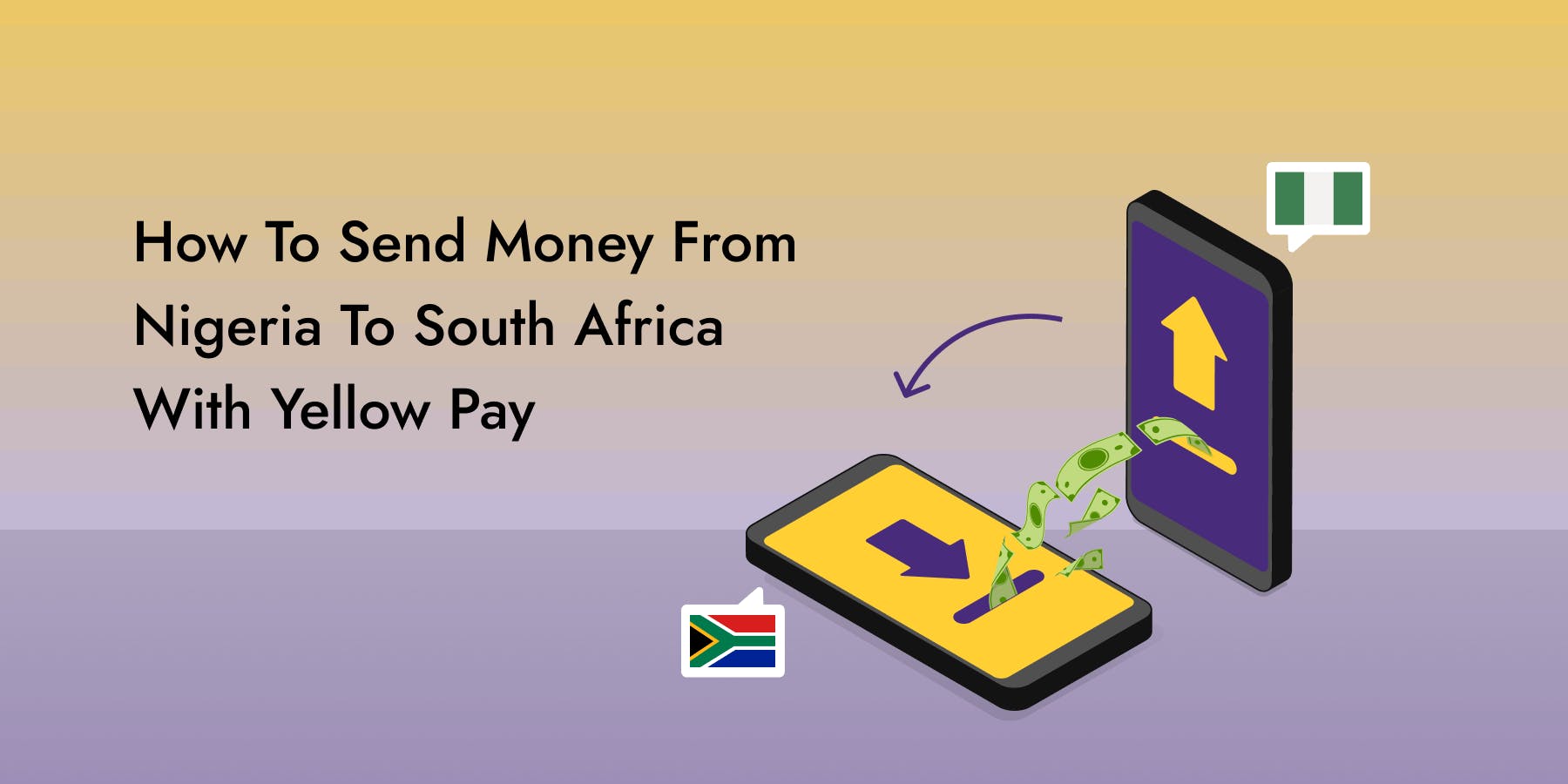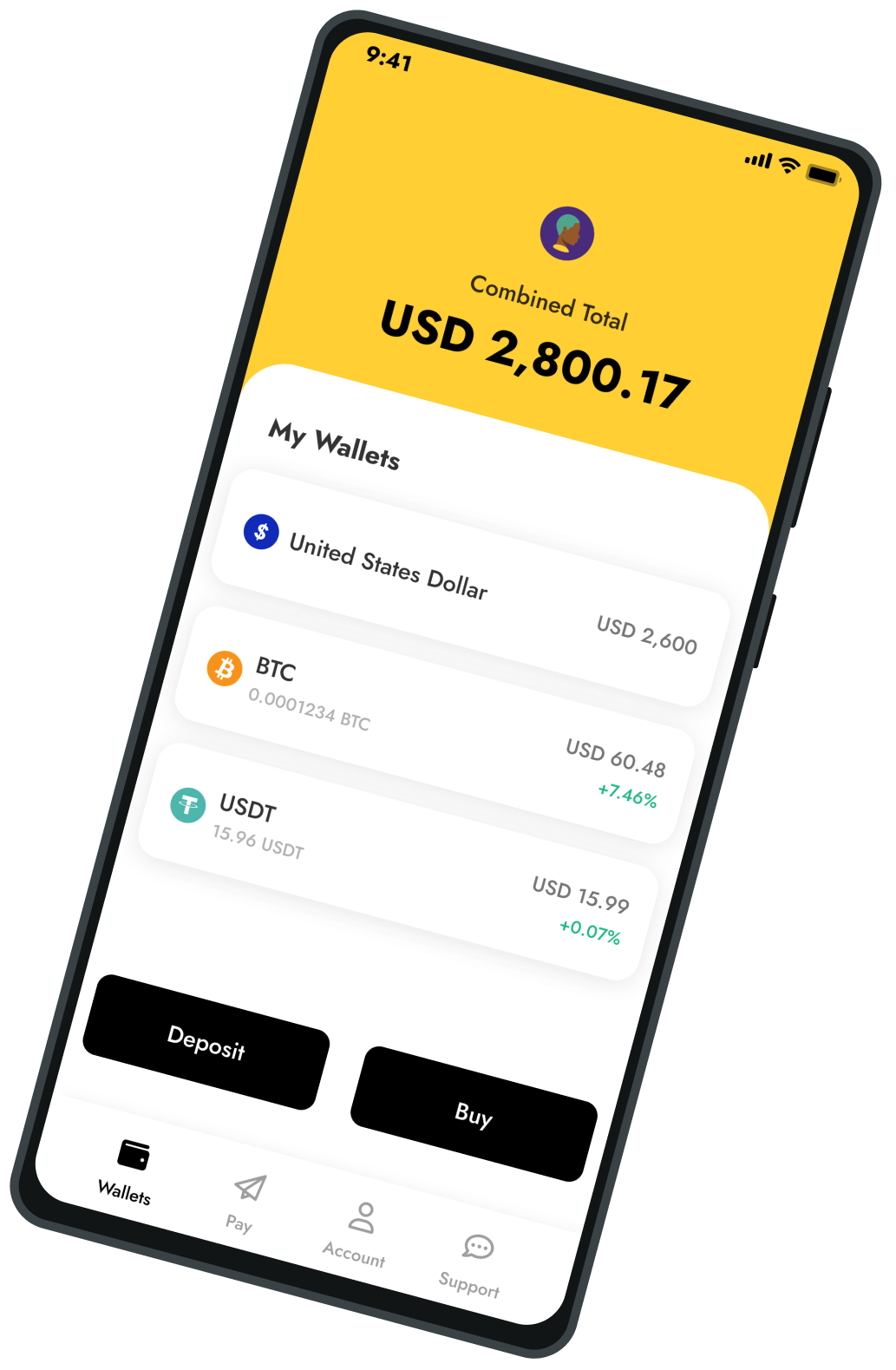How To Send Money From Nigeria To South Africa Instantly With Yellow Pay
Guides
Back to blog
Favour
2022-12-30
Guides
On this page
Say goodbye to slow and expensive transactions when sending money to South Africa and enjoy an instant and easier method with Yellow Pay at no fees.
Sending money locally isn’t without hiccups, but sending money from one country to another becomes even more challenging. But then, there are several reasons why we need to send money across borders. We need to send money to our friends, family or colleagues or for payment for goods and services.
While our local banks and payment platforms like Moneygram have existed for so long, cross-border payments remain challenging to process. This is why, today, we’ll be unravelling one of the most secure, fast and cheapest ways to send money, Yellow Pay. Yellow Pay is a payment product of the Pan-African crypto exchange Yellow Card that allows you to send money across Africa easily, instantly and securely.
Challenges of Cross-Border Payment And How Yellow Pay Is Your Best Alternative
- Speed
While local transactions can get completed in minutes and hours, sending money from Nigeria to South Africa can take days, even weeks. With Yellow Pay, you can send money easily and instantly, making it the prime choice for persons seeking to send money from Nigeria to South Africa. - Expensive Transaction Cost
Cross-border transactions are expensive, and there are often hidden charges. At the same time, you would have to purchase dollars with naira and then send it to South Africa before the receiver can convert to rand.
Yellow Pay offers the fastest way to send money from Nigeria to South Africa and allows you to do this at no cost. Yellow Pay also eliminates the need for multiple conversions. You send money in Naira, and the receiver receives it directly in Rand. No extra charge! - Prolonged Processing and Documentation:
Cross-border transactions using banks require a prolonged and often tiresome process of documentation. People are repeatedly denied the opportunity to send money across borders because they don’t have the necessary documentation.
This problem is eradicated with Yellow Pay. On any interconnected device, you can create an account for free and verify your account in minutes. Thus, allowing you to send money to South Africa with ease.
How To Send Money From Nigeria To South Africa
In more ways than one, Yellow Card helps you easily send money from Nigeria to South Africa without cross-border payment challenges. Here’s how to send money from Nigeria to South Africa with no hidden fees:
- Sign up on Yellow Card and verify your account:
- On the homepage, select “Pay”, then click “Send.”
- Select the country code, enter the recipient's phone number, and tap “Check phone number.”
If the person isn’t a Yellow Card verified user, you can invite them to open a Yellow Card account. However, you can proceed to send them the money with their phone number. - Enter the amount you would like to send. You’ll see the rand equivalent the receiver will get. Select the reason for sending, then tap “Next” to continue.
- Review the transaction details, then “confirm” the transaction
- That’s all! The receiver will receive a notification informing them that they’ve received the money.
If the person you send the money to isn't a Yellow Card customer, they receive a notification to signup and receive the money. The amount will be reverted to your account if they don’t sign up within 7 days.
How To Receive and Withdraw Money In South Africa Using Yellow Pay
Yellow Pay allows you to also request money from your friends and family. All you have to do is click on the “request” button, add the sender’s number, and the Sender receives a custom message allowing them to send you money with ease.
Here’s how to receive money in South Africa with Yellow Pay:
- Log in on Yellow Card. Sign up on the platform if you received money but are not a Yellow Card customer.
NB: Sign up only with the registered number the sender used when setting up your account. Once you sign up and verify your account, you’ll see the amount reflected in your account in your local currency. - Withdraw to your bank account.
You can withdraw your rand directly to your bank account through either Electronic Funds Transfer (ETF) or Instant Bank Withdrawal
For Electronic Funds Transfer (ETF):
undefinedundefinedundefinedundefined
For Instant Bank Withdrawal:
undefinedundefinedundefinedundefined - That’s all! You’ll see the rand reflected in your bank account almost instantly.
Remember, the money in your account is yours, and you can choose to hold it in the account or withdraw instantly at any time of your choice.
In A Nutshell
There are still a lot of challenges with cross-border payment, but you can find an easier and more trusted means to send money via Yellow Pay. Yellow Card is operational in over 15+ African countries, allowing you to send money to any of these countries at no extra cost.
Yellow Pay remains the easiest way to send money home and abroad at no extra cost. Say a final goodbye to huge rates and stress when sending money. Enjoy a safe, fast, reliable, and cheap way to send money with Yellow Pay.
Try it Now
Disclaimer: Yellow Pay uses Yellow Card’s crypto exchange platform to complete customer transactions in USDT. Yellow Pay is not a money remittance or foreign currency exchange service
Disclaimer: This article is for information purposes only and should not be construed as legal, tax, investment or financial advice. Nothing contained in this article constitutes a solicitation, recommendation, endorsement or offer by Yellow Card to buy or sell any digital asset. There is risk involved in investing or transacting in digital assets, please seek professional advice if you require one. We do not assume any responsibility or liability for any loss or damage you may incur dealing with digital assets. For more information on Digital Asset Risk Disclosure please see - Risk Disclosure.



